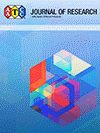
AATCC Journal of Research
Scope & Guideline
Unveiling the latest trends in materials science.
Introduction
Aims and Scopes
- Textile Chemistry and Material Science:
The journal publishes research on the chemical processes involved in textile production, dyeing, and finishing, including studies on natural and synthetic dyes, fiber treatments, and the development of novel textile materials with enhanced properties. - Sustainability and Environmental Impact:
A significant focus is placed on sustainability practices in textile manufacturing, including assessments of carbon footprints, water usage, and waste management strategies, promoting eco-friendly innovations within the industry. - Functional Textiles and Smart Fabrics:
Research on functional applications of textiles, such as moisture management, antibacterial properties, and smart textiles for medical and wearable technology, is a core area, reflecting the demand for textiles that meet specific performance criteria. - Textile Engineering and Production Processes:
The journal covers advancements in textile engineering, including process optimization, manufacturing techniques, and the development of new machinery and processes to enhance efficiency and product quality. - Health and Safety in Textiles:
Research addressing health risks associated with textiles, including studies on dermal exposure to chemicals and the safety of textile products, is an important aspect of the journal's scope.
Trending and Emerging
- Sustainable Practices and Materials:
An increasing number of studies focus on sustainable practices, such as the use of natural dyes, recycling of textile waste, and the development of biodegradable materials, highlighting the industry's commitment to environmental responsibility. - Smart Textiles and Wearable Technology:
There is a growing interest in the integration of technology into textiles, including wearable sensors and smart fabrics that monitor health or environmental conditions, reflecting advancements in textile engineering and consumer demand. - Health and Safety Innovations:
Emerging research is addressing health-related issues in textiles, including antimicrobial treatments and safety assessments of materials used in personal protective equipment, driven by global health concerns. - Advanced Textile Functionalization:
Research on the functionalization of textiles using nanotechnology and advanced chemical treatments is on the rise, focusing on enhancing properties such as water repellency, fire resistance, and antibacterial effects. - Digital Textile Printing Technologies:
The shift towards digital printing techniques is evident, with studies exploring the environmental benefits and efficiencies of digital versus traditional methods, as well as innovations in ink formulations and printing processes.
Declining or Waning
- Traditional Dyeing Techniques:
Research on traditional dyeing methods has seen a decrease as the industry shifts towards more sustainable and innovative dyeing technologies, such as digital printing and eco-friendly chemical processes. - Conventional Textile Materials:
There is a waning interest in studies focusing solely on conventional textile materials, as the field moves towards exploring advanced materials like nanofibers and composites, which offer enhanced functionalities. - Basic Fabric Properties Studies:
Research centered on basic fabric properties without integrating advanced applications or technologies is becoming less frequent, with a greater emphasis on multifunctional textiles and performance-based studies.
Similar Journals

Tekstil ve Konfeksiyon
Advancing Knowledge in Industrial and Manufacturing EngineeringTekstil ve Konfeksiyon, a distinguished journal published by the E.U. Printing and Publishing House, serves as a vital resource in the fields of Industrial and Manufacturing Engineering as well as Materials Science. With an ISSN of 1300-3356, this Turkish journal has witnessed significant development since its inception in 2008, continuing to contribute valuable insights and advancements through 2024. Although categorized in the third quartile (Q3) for Industrial and Manufacturing Engineering and the fourth quartile (Q4) for Materials Science, the journal ranks respectably within its fields—249th out of 384 and 357th out of 463, respectively, according to Scopus. Researchers, professionals, and students can gain access to a variety of cutting-edge studies and applications that reflect the latest trends and innovations in textile and apparel technology. The journal emphasizes the importance of practical applications and interdisciplinary research, fostering a platform for knowledge exchange and development aimed at pushing the boundaries of textile and clothing sciences.
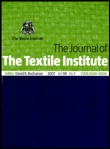
JOURNAL OF THE TEXTILE INSTITUTE
Pioneering insights in the textile industry since 1967.The Journal of the Textile Institute, published by Taylor & Francis Ltd, is a renowned academic journal that has been pivotal in advancing research and innovation in the textile industry since its inception in 1967. With a robust ISSN of 0040-5000 and an E-ISSN of 1754-2340, this journal serves as a vital resource for researchers, practitioners, and students interested in the multifaceted aspects of textiles, encompassing agricultural and biological sciences, industrial engineering, and materials science. With a respectable impact factor reflected in its Q2 quartile rankings in the 2023 categories of Agricultural and Biological Sciences, Industrial and Manufacturing Engineering, and Polymers and Plastics, the journal stands out in the academic landscape—offering high-quality, peer-reviewed articles that foster knowledge exchange and innovation. Researchers and professionals alike will find this journal's commitment to exploring contemporary challenges and technological advancements ultimately invaluable for both academic inquiries and practical applications in the textile field.
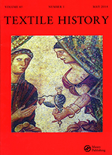
TEXTILE HISTORY
Illuminating the Cultural Tapestry of TextilesTEXTILE HISTORY is a distinguished journal focusing on the rich tapestry of textile development across various historical contexts, published by Routledge Journals, Taylor & Francis Ltd. With origins dating back to 1968, this journal serves as a crucial platform for scholarly discourse in the fields of history, industrial and manufacturing engineering, and business management. It holds impressive rankings, including Q2 in History and ranks within the top 20% in Arts and Humanities, reflecting its significant contribution to understanding the socio-economic and cultural implications of textiles. Additionally, it operates under a traditional access model, ensuring that quality research is preserved within a structured environment. The journal is an invaluable resource for researchers, professionals, and students alike, aiming to advance knowledge and inspire future studies in textile history. Situated in the United Kingdom, the editorial team is committed to fostering a vibrant academic community that engages with the dynamic intersections of textiles, industry, and cultural heritage.

EGYPTIAN JOURNAL OF CHEMISTRY
Connecting Scholars through Groundbreaking Chemistry InsightsThe Egyptian Journal of Chemistry, published by the National Information & Documentation Centre (NIDOC), serves as a vital platform for disseminating novel research and advancements in the field of chemistry and its interdisciplinary applications. Established in 2004 and continuing its publication through 2024, this journal encapsulates a diverse range of topics including Biochemistry, Chemical Engineering, and Materials Science, reflected in its respectable Scopus rankings. With an array of Quartile rankings indicating its varying impact across different categories, scholars can benefit from its insights into innovative solutions and methodologies that address pressing scientific challenges. Although it currently does not operate under an open access model, researchers and students are encouraged to leverage its findings as it plays a pivotal role in the academic landscape of Egypt and beyond. For those engaged in chemical research, the Egyptian Journal of Chemistry stands as an essential resource, contributing significantly to the global body of scientific knowledge.

Textile-Cloth and Culture
Weaving Insights, Cultivating CultureTextile-Cloth and Culture, published by ROUTLEDGE JOURNALS, TAYLOR & FRANCIS LTD, stands at the forefront of interdisciplinary research within the field of textile studies, integrating perspectives from arts and humanities. With an ISSN of 1475-9756 and an E-ISSN of 1751-8350, this journal fosters scholarly discourse and innovation from its United Kingdom base. Covering a wide array of topics related to textiles, cloth, and their cultural significance, Textile-Cloth and Culture is categorized in the prestigious Q2 quartile in Arts and Humanities (Miscellaneous) for 2023, holding a solid position in the Scopus ranking at #63 out of 173 journals in the general Arts and Humanities category. Since its inception in 2006, it has become a vital resource for researchers, professionals, and students, emphasizing the profound influence of textiles in cultural contexts. The journal's commitment to high-quality research provides readers with access to insightful studies, critical reviews, and innovative methodologies that further our understanding of the interplay between textiles and society, making it an essential journal for those aiming to stay updated in this dynamic field.
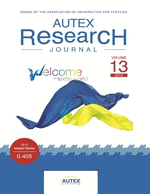
Autex Research Journal
Empowering scholars with cutting-edge insights in textile technology.Autex Research Journal is a distinguished *open access* academic journal published by WALTER DE GRUYTER GMBH, specializing in the interdisciplinary fields of Industrial and Manufacturing Engineering, Management of Technology and Innovation, and Materials Science. Since its inception in 1999, the journal has fostered scholarly communication by offering a platform for innovative research and advancements in textile technology and related disciplines. With an impact factor indicative of a solid academic reputation, the journal holds a prestigious Q3 quartile ranking in multiple categories, including Industrial and Manufacturing Engineering and Management of Technology and Innovation, positioning it as a noteworthy resource for both researchers and practitioners. The journal embraces a global perspective, featuring a broad scope of topics pertinent to textile science, innovation management, and material application in various industries. Its open access format since 2012 ensures that the latest research is freely available to a wide audience, reinforcing its commitment to the advancement of knowledge and technology in textiles. Researchers, professionals, and students alike will find the *Autex Research Journal* an invaluable resource for staying updated on developments within these dynamic fields.
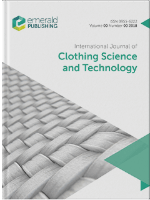
International Journal of Clothing Science and Technology
Advancing the Future of Fashion and Fabric Innovation.International Journal of Clothing Science and Technology, published by Emerald Group Publishing Ltd, is a leading academic journal dedicated to advancing the field of clothing science and technology. With a commitment to high-quality research since its inception in 1989, this journal effectively bridges the gap between innovation and application within the realms of textiles, fashion, and related materials science. The journal holds a respectable Q3 ranking across several categories, including Business, Management and Accounting (miscellaneous) and Materials Science, emphasizing its relevance in both industry and academia. Although it is not Open Access, the journal nonetheless provides critical insights and findings that are essential for researchers, professionals, and students aiming to navigate the complex world of clothing technology. From sustainable practices to new fabric technologies, the International Journal of Clothing Science and Technology remains a vital resource, equipping its readers with the latest knowledge to drive progress in this dynamic field.

Industria Textila
Fostering Innovation and Sustainability in Textile ScienceIndustria Textila is a prominent academic journal dedicated to advancing knowledge in the fields of textile science, engineering, and related disciplines. Published by the Institutul Național de Cercetare-Dezvoltare Textile Pielarie din București, Romania, this journal has been a key player in the textile research community since its inception in 1994, with a converged publication timeline extending to 2024. With its significant contributions, Industria Textila currently holds a Q3 ranking in various categories, including Business, Management and Accounting, Environmental Science, and Materials Science. Despite its more accessible open access status, researchers are drawn to its rigorous scientific standards and interdisciplinary approach, addressing critical issues in textiles such as sustainability and innovation. The journal's commitment to enhancing understanding of interrelated sectors makes it an invaluable resource for academics, professionals, and students aiming to contribute to the evolving landscape of textile research. With a focus on both applied and theoretical aspects, Industria Textila seeks to bridge gaps between research findings and practical applications, thereby inspiring advancements in the field.
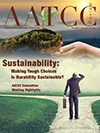
AATCC REVIEW
Advancing textile science through innovation and collaboration.AATCC REVIEW is a distinguished journal published by the American Association of Textile Chemists and Colorists (AATCC), focusing on the interdisciplinary fields of textile chemistry, material sciences, and engineering. With an ISSN of 1532-8813, this journal serves as a vital platform for researchers and professionals engaged in the latest advancements and innovative practices within the textile industry. Despite its Q4 rankings in the 2023 category quartiles for Chemical Engineering, Chemistry, and Materials Science, AATCC REVIEW remains committed to enhancing its academic contributions and bolstering knowledge-sharing within its community. The journal, which has transitioned to a view title change in open access, enables a wider dissemination of research findings, thus supporting the global textile community in addressing contemporary challenges. With a coverage period from 2001 to 2020 and its U.S. base situated in Research Triangle Park, North Carolina, the journal plays a significant role in bridging the gap between academia and industry, making it an essential resource for students, researchers, and industry professionals alike.

Research Journal of Textile and Apparel
Advancing textile innovation through rigorous research.Research Journal of Textile and Apparel, published by Emerald Group Publishing Ltd, serves as a pivotal platform for advancing knowledge in the fields of textile and apparel research. With an ISSN of 1560-6074, this journal has been disseminating quality research since its inception in 1997, and it continues to contribute valuable insights through to 2024. The journal holds a Q3 ranking across multiple categories, including Business and International Management, Industrial and Manufacturing Engineering, Management of Technology and Innovation, and Materials Science, reflecting its commitment to high standards of scholarship. Although not an open-access journal, it provides a vital resource for researchers, professionals, and students eager to explore innovative textile technologies and sustainable practices within the fashion industry. As the textile sector navigates significant challenges and opportunities, this journal is uniquely positioned to foster collaboration and enhance understanding among diverse stakeholders.